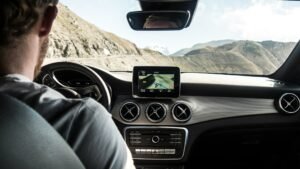
The Final Stretch: Preparing for Your G2 Road Test in Ontario
Preparing for your G2 road test in Ontario is a significant step towards gaining greater
Snow. Either you adore it, or you detest it. Or perhaps you experience emotions that lie in the middle of those two extremes. Driving, nevertheless, through the snow. That is a unique situation. Yes, the snow is beautiful. However, things may get ugly when it begins to adhere to roadways and turns into a messy mess. Driving your automobile in the snow is occasionally your only choice unless you have a dog sled or snowmobile. However, icy and snow-covered roadways should be avoided. These slick driving conditions cause numerous automobile accidents. Accidents can damage your car and result in personal injuries, but even a seemingly little fender bender can spoil your day. While adverse weather conditions like snow and ice may frequently contribute to accidents in Canada, you might be shocked to learn that most collisions result from careless driving and distracted driving. Winter weather makes automobile wrecks terrifying.
When the weather is terrible, “the Good Drivers,” as an expert driving school Brampton, advises staying off the road. However, if you have to drive in winter conditions, it’s crucial to follow our safety guidelines to avoid a collision. We have designed a unique course for winter. The “Good Drivers” Winter Driving Course is the most advanced driving training system available. The best driving school near me created this course with ALL drivers in mind, and it will advance your driving safety well above the degree of defensive driving instruction provided by other programs.
Learn techniques from “Good Driver’s” expert driving instructors near me that keep you secure when there is little traction. We’ll show you how to drive safely in the snow and ice.
The full-day driving lesson includes classroom instruction in the morning and driving practices in the afternoon that let each student put newly learned information into practice. A winter automobile emergency kit could come in handy if you are involved in a collision. Here are five simple tips to remember before you and your loved ones get behind the wheel to help you avoid a collision.
Be conscious of your environment.
Inattentive and distracted drivers are at blame for more than 30% of all collisions. While driving, paying attention to the road in front of you is crucial, but you should always be aware of what’s to your left, right, and even behind you. Be alert for motorcycle riders who frequently attempt lane splits, pay attention to the tailgaters or traffic incidents nearby, and remember that pedestrians and cyclists can sometimes be challenging to notice when driving and appear out of nowhere. You will be better equipped to take evasive action and prevent an accident if you do this.
Don’t use the “fast lane”.
Driving in the passing or “fast” lane can make many drivers uneasy. How often have you been forced to drive faster – frequently well beyond the speed limit – by a car tailgating you in the passing lane? Even if you enjoy driving in the fast lane, you might want to avoid it because of other drivers’ carelessness or recklessness. You will also provide additional escape routes if you stay in the middle lane(s) in case you need to avoid an accident up ahead.
Judge nearby cars by their outlook.
Although it’s been said that you shouldn’t judge a book by its cover, you should assess the appearance of the automobiles sharing the road. If you see that a driver’s car is not in excellent shape (whether there are numerous dents, the taillights are taped on, or there is a waste bag covering a window), this may be a sign that they are either reckless or inattentive drivers. As a result, you should try to avoid passing this motorist or allow more space between your car and theirs.
Care for your vehicle as needed.
You must also maintain your car in good condition. The person driving behind you might not see you are stopping if your brake lights are not working correctly, which might result in a rear-end collision. Likewise, be sure to check your brakes and brake pads frequently. It goes without saying that if you can’t stop your car, someone else may get hurt or die in the crash. Additionally, ensure your oil is changed regularly, your tires are rotated, and they have adequate wear.
Know your auto.
It would help if you always understood the intricacies of your car. Blind spots, acceleration rates, and stopping distances vary between vehicle models and sizes. You will be better equipped to take evasive action and prevent an accident in the case of an emergency if you are familiar with the car you select to drive.
It will help you prevent a traffic collision and keep you, your passengers, and other drivers safe if you follow these simple suggestions. So to learn more and get training, enroll yourself in the “Good Drivers” winter driving program now!

Preparing for your G2 road test in Ontario is a significant step towards gaining greater

Getting your driver’s license is a milestone many of us dream about. Symbolizing freedom and

In the fast-paced environment of today’s roads, transitioning from a reactive to a proactive driving

Passing your G2 road test is a significant milestone in becoming a licensed driver. It

Driving in Canada will be considerably different for many new immigrants from driving in their

Good Drivers was established in 1981, with the aim of providing affordable driver education programs of excellent quality for all members of our society.
10095 Bramalea Rd, Unit #201, Brampton, ON, L6R 0K1